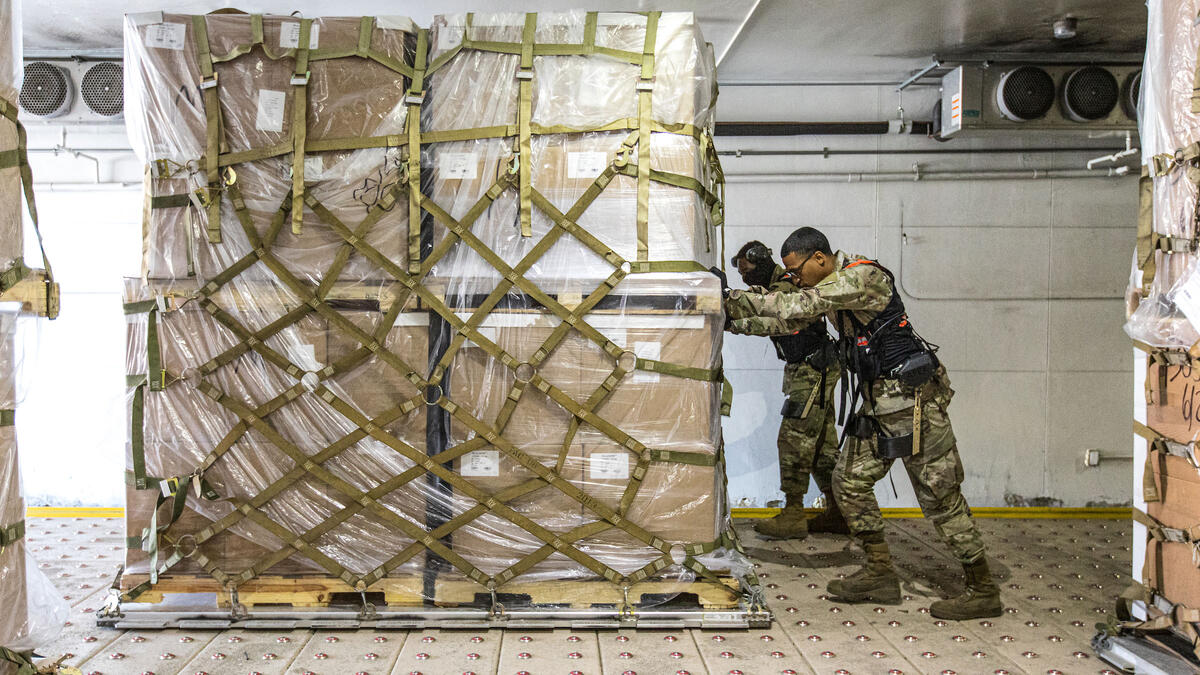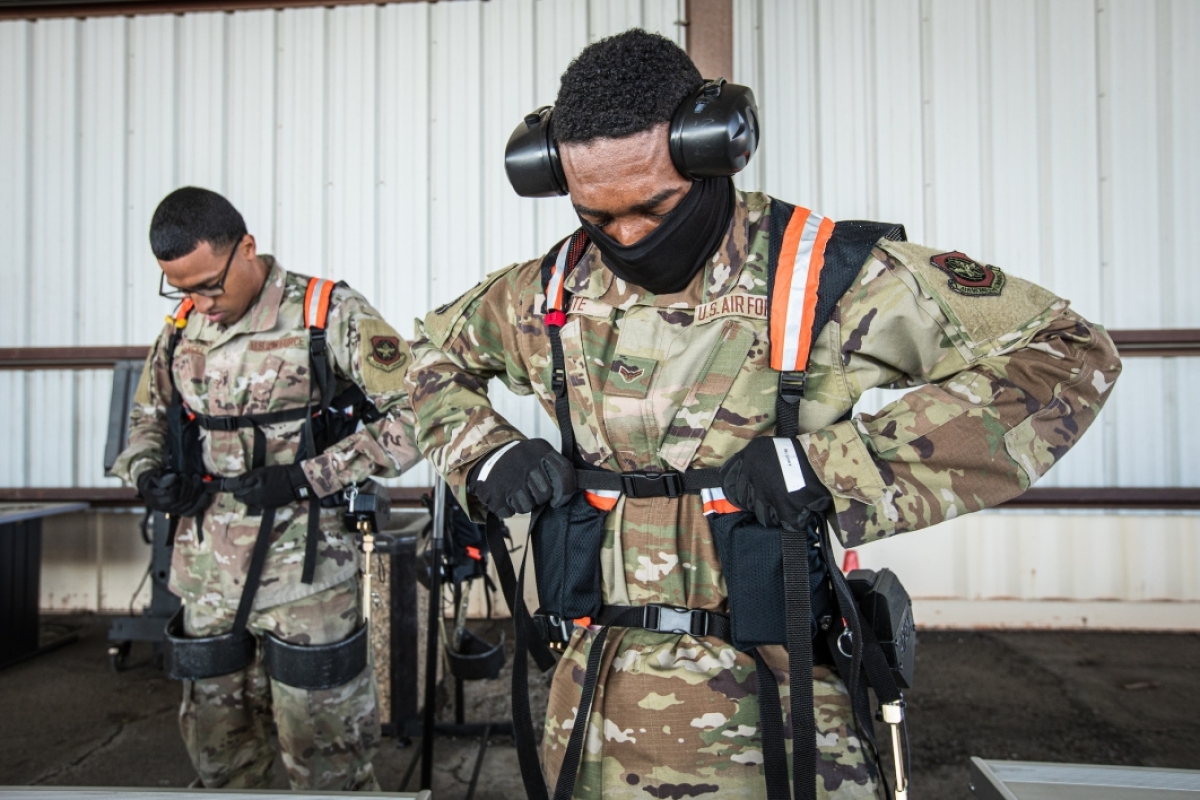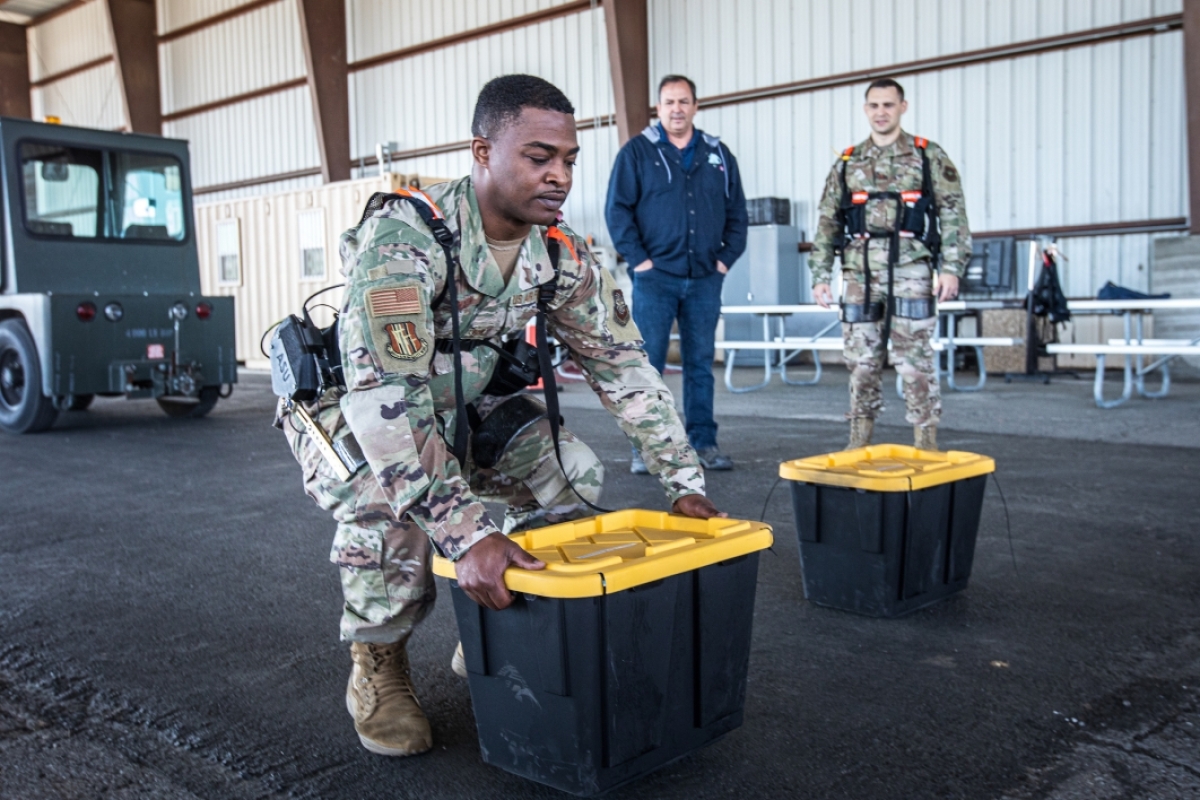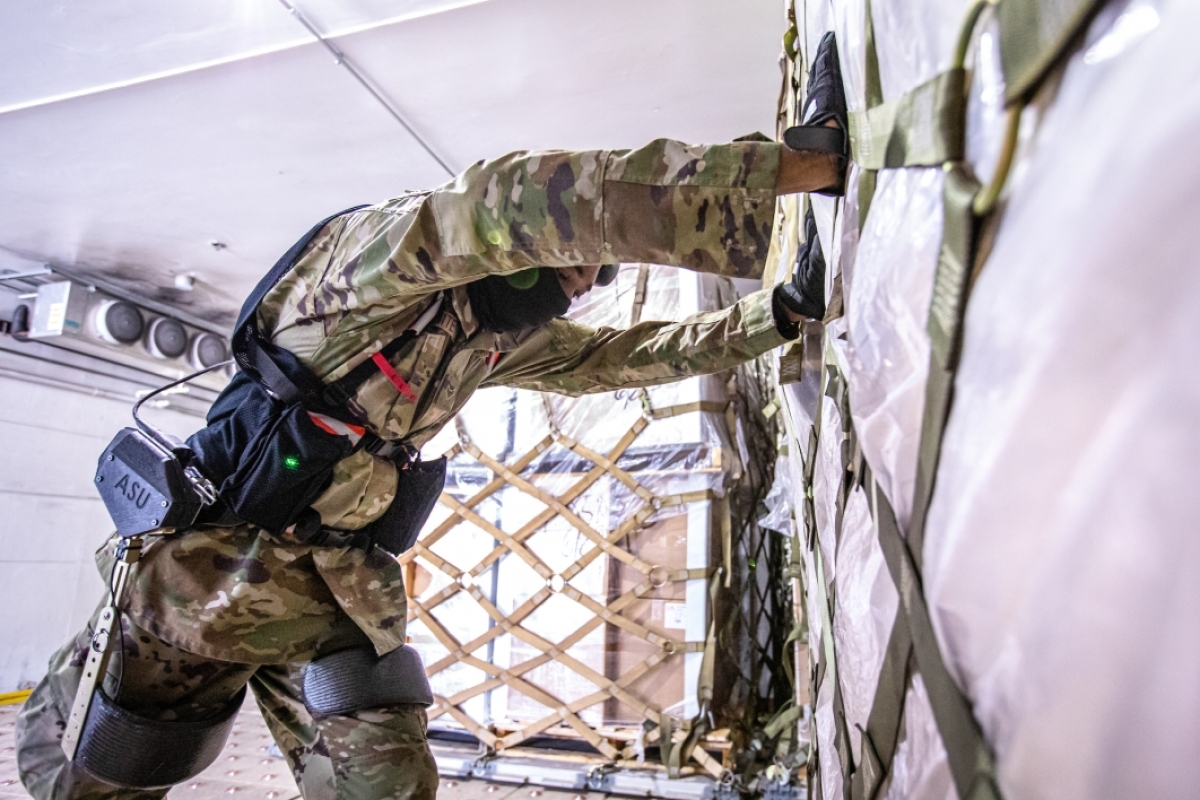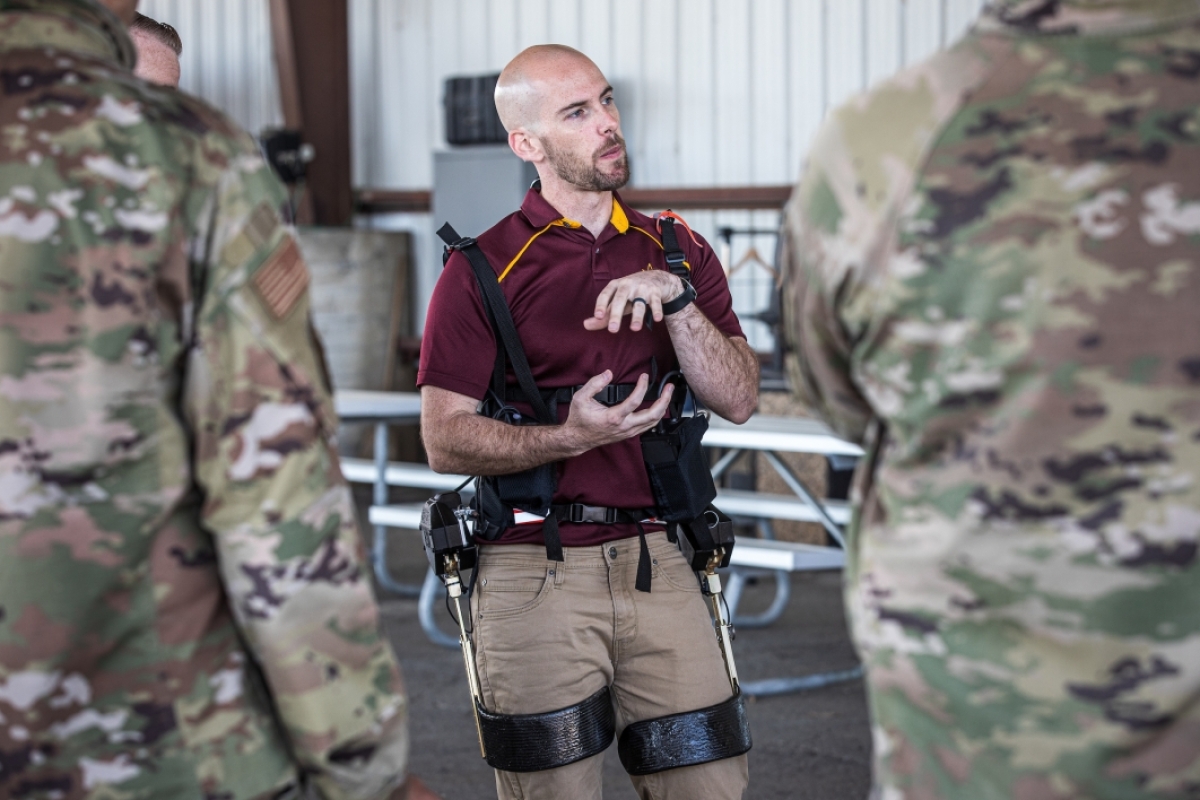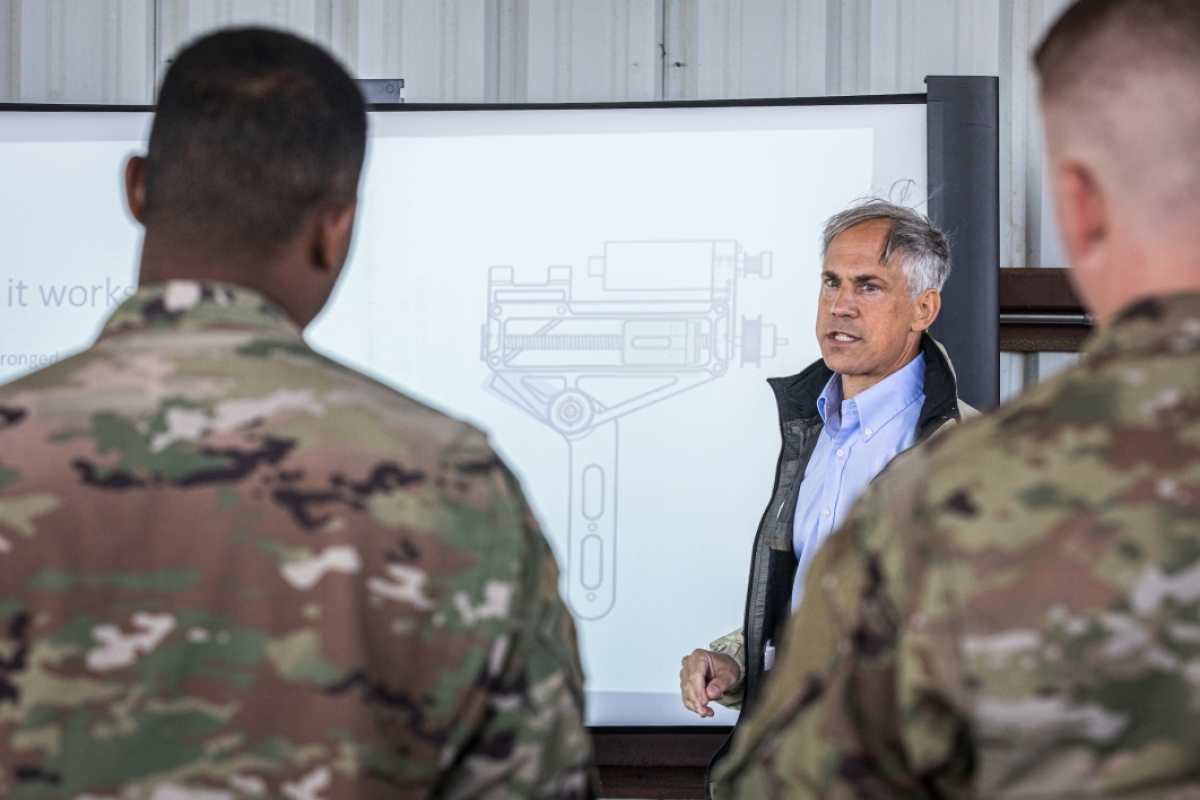Although it may not yet be at the level of Iron Man’s exoskeleton, a new power and endurance device from Arizona State University is giving U.S. Air Force aerial porters enhanced levels of safety and strength on the job.
The Aerial Port Exoskeleton, or APEx, provides Air Force aerial porters — responsible for loading pallets and lifting cargo onto aircraft — increased lifting and pushing support.
“The fundamental purposes of APEx are worker wellness and making pushing and lifting easier and safer,” said Thomas Sugar, an ASU professor of systems engineering and primary investigator on the project.
“APEx is an exoskeleton designed to assist people with loading a 10,000-pound pallet and then pushing it onto an airplane.”
Video by Ken Fagan/ASU News
The APEx project was created based on the U.S. Department of Transportation’s 2019 Volpe Center study, which revealed that more than $31 million is spent annually in disability benefits for retired aerial porters, who had a high incidence of musculoskeletal injuries.
“Our unique ideas included designing a device that would allow it to be disengaged and out of the way when walking, running, sitting or crawling to allow free movement and not be a hinderance,” said Sugar. “But when activated, the device assists pushing and lifting with up to 30 newton metersA newton meter is a unit of torque. One newton meter is equal to approximately 0.738 pound-feet. per leg in a lightweight, 8-pound device.”
Working in teams of four during the testing, the porters stacked pallets of cargo weighing up to 10,000 pounds — mostly personal protective equipment and vaccines headed to Asia as part of President Joe Biden’s humanitarian efforts — and loaded them onto planes.
W. Brandon Martin, an Air Force Reserve officer, is an ASU doctoral student who has been developing the device as his PhD project. Martin was on-site at Travis Air Force Base in California for eight weeks during testing in May and June. Martin worked with aerial porters from the 60th Aerial Port Squadron to monitor APEx performance and make adjustments based on worker feedback.
In speaking about the testing process, Martin said, “The awesome thing was that the people who had already worn the exoskeleton were giving pointers to the individuals who had not, so they developed their own institutional knowledge of how to use the robot.”
Tech. Sgt. Landon Jensen, transportation manager from Air Mobility Command at Scott Air Force Base in Illinois, worked with the team through development. He managed the testing operations at Travis.
“The first time I tried it on was at ASU,” said Jensen. “When I put it on, I realized there was more potential there than I thought there was originally. Their original design of the suit was very close.”
During testing, Jensen said the porters involved provided great feedback.
“ASU has been very receptive to that feedback,” he said. “I think ASU legitimately wants what’s best for the airmen and the Air Force. The relationship has been fantastic. It allows us to create something that we can actually use.”
The contract was funded under the Department of Defense Rapid Innovation Fund, which awards contracts to develop innovative technologies that can be rapidly inserted into programs that meet needs and are designed to include small businesses in the research process. RIF is administered by the undersecretary of defense for research and engineering, small business and technology partnerships.
“The Volpe study showed that aerial porters had a high incidence of muscular skeletal injuries resulting in large workers-compensation costs,” said Sugar. “We were asked to develop an exoskeleton that can assist pushing heavy equipment onto an airplane and lift objects for palletizing.”
The $1.2 million project created for the Air Mobility Command at Scott Air Force Base, was administered by Lt. Col. Saily Rodriguez from the Human Systems Division of the Agile Combat Support Directorate at Wright-Patterson Air Force Base in Ohio.
Kevin Hollander, who received his PhD from ASU in 2005, has more than 20 years’ experience developing prosthetic, orthotic and exoskeleton devices. He was a design consultant on the project for subcontractor Augspurger Komm Engineering.
Joe Hitt, a former lieutenant colonel in the Army and the CEO of project subcontractor GoX Labs, served as a design subcontractor focusing on measuring the users’ performance. Hitt received his PhD from ASU in 2008.
Alex Boehler, who received his master’s degree from ASU in 2008, is a systems engineering doctoral student who developed the device electronics as his doctoral project.
Story package by Ken Fagan, Charlie Leight and Terry Grant. For media inquiries: Terry Grant, 520-907-2248 or Theresa.Grant@asu.edu.
Top photo: Aerial porters Airman 1st Class Xavier Archangel (right) and Airman 1st Class Adrien White move pallets loaded with COVID-19 test kits at Travis Air Force Base in California on June 10. They wore APEx robotic exoskeletons developed by ASU Professor Thomas Sugar and his team, created to to address the high injury rate of aerial porters — airmen who lift content and push pallets of military and humanitarian supplies for transport worldwide. Photo by Charlie Leight/ASU News
More Science and technology

ASU to host 2 new 51 Pegasi b Fellows, cementing leadership in exoplanet research
Arizona State University continues its rapid rise in planetary astronomy, welcoming two new 51 Pegasi b Fellows to its exoplanet research team in fall 2025. The Heising-Simons Foundation awarded the…

ASU students win big at homeland security design challenge
By Cynthia GerberArizona State University students took home five prizes — including two first-place victories — from this year’s Designing Actionable Solutions for a Secure Homeland student design…

Swarm science: Oral bacteria move in waves to spread and survive
Swarming behaviors appear everywhere in nature — from schools of fish darting in synchrony to locusts sweeping across landscapes in coordinated waves. On winter evenings, just before dusk, hundreds…


